Compiled by Team IAnD
Photography: Make Architects; courtesy v2com
Read Time: 2 mins
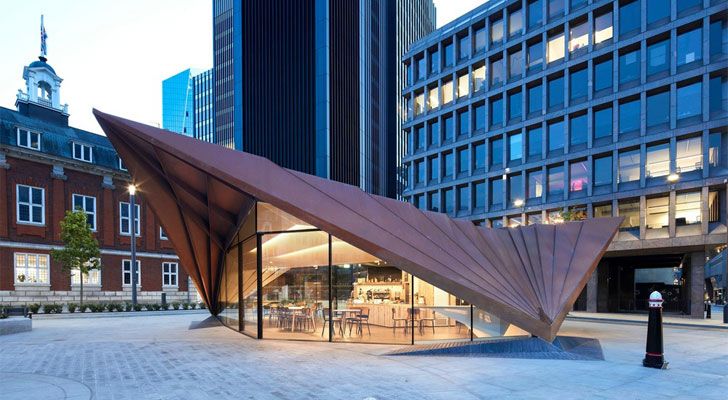 |
| . |
The Portsoken Pavilion showcases a unique monocoque design that has just three triangular support points!
A gyratory which reflected 1960s traffic planning is brought into the 21st century with this sculptural monocoque structure by Make Architects as a café and multifunctional community space. The pavilion fulfils two functions – delivers a public amenity as well as improves the connection between the two distinctive listed heritage buildings that sit either side of the new square: the St Botolph without Aldgate church and Sir John Cass’s Foundation Primary School.
The former complex roundabout, with its series of pedestrian subways, has been the subject of intense development for over six years to reroute roads, block off unsafe subways and transform the buzzing business area into the new Aldgate Square - one of the largest public spaces in London’s Square Mile.
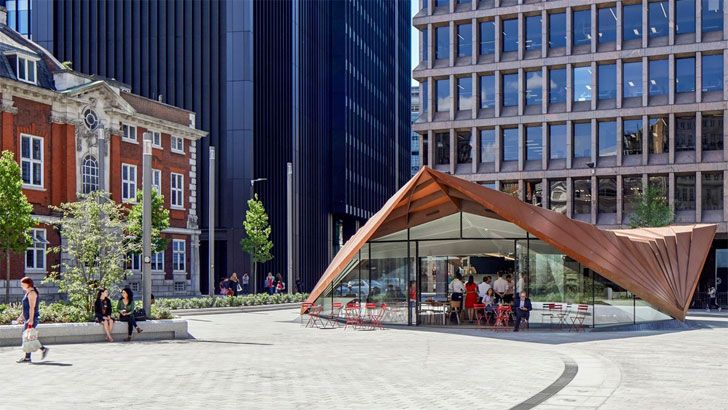 |
| . |
 |
| . |
The pavilion picks up on the asymmetrical angles of the City of London Information Centre with an angular structure that folds down to meet the ground at just three triangular support points, with glazing in between. Corten cladding panels form a rigid structural skin covering the pavilion and create a faceted surface that reduces the overall profile of the pavilion and provides its character.
The warm tones of the weathered steel chime with the brown brick of the Grade I-listed church and the red brick Grade II-listed primary school. Over time the steel will darken and provide an earthy, complementary counterpoint.
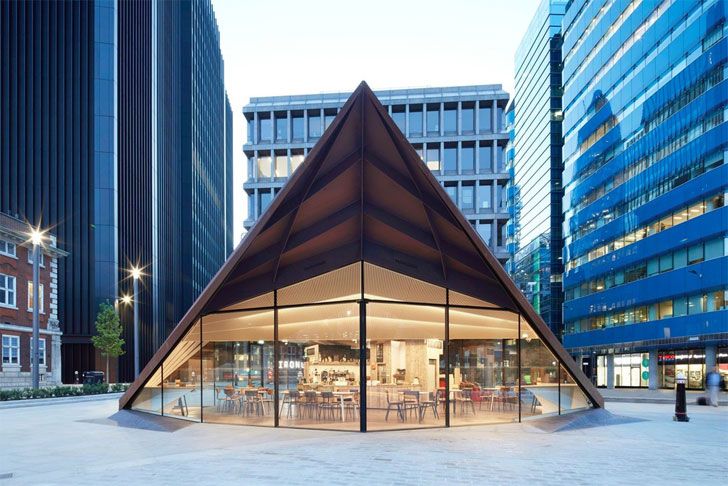 |
| . |
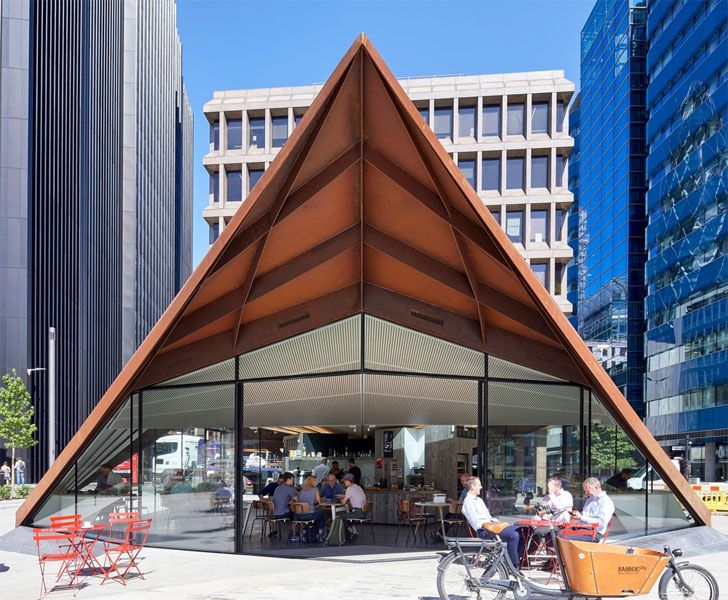 |
| . |
Award-winning international architectural practice, Make Architects, with a reputation for challenging convention and pursuing design excellence have parametrically designed the pavilion, paying special heed to key pedestrian approaches around the new square. As such, it has no backside, and its three glazed elevations provide clear views into and through the structure and deliver natural surveillance, as well as entrances into the pavilion on all sides.
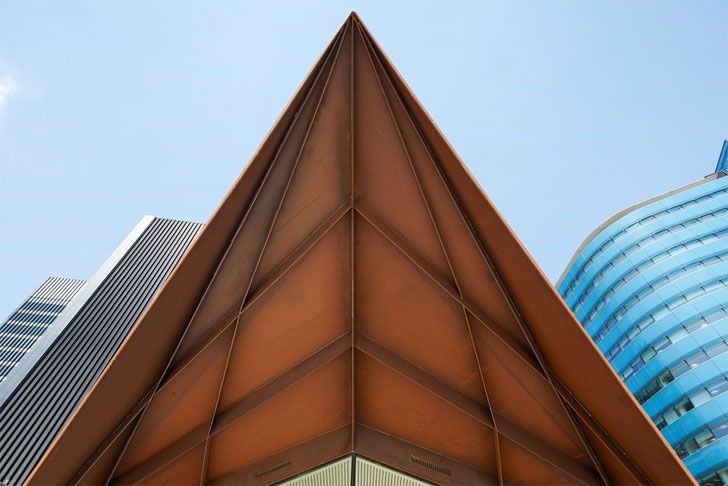 |
| . |
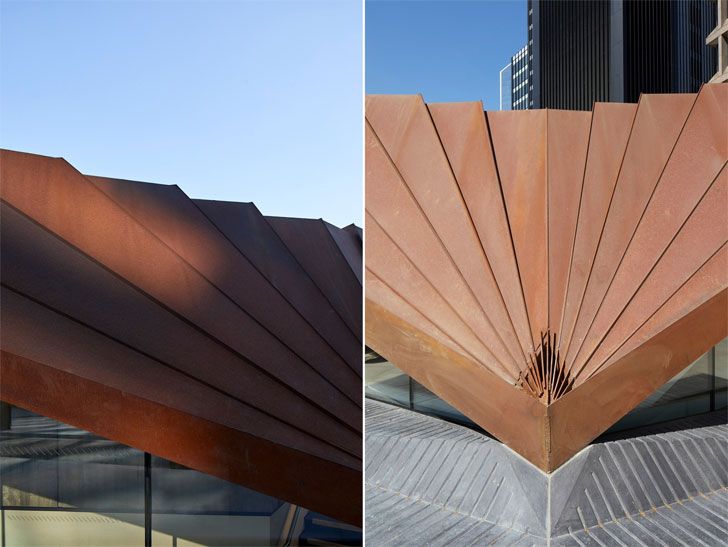 |
| . |
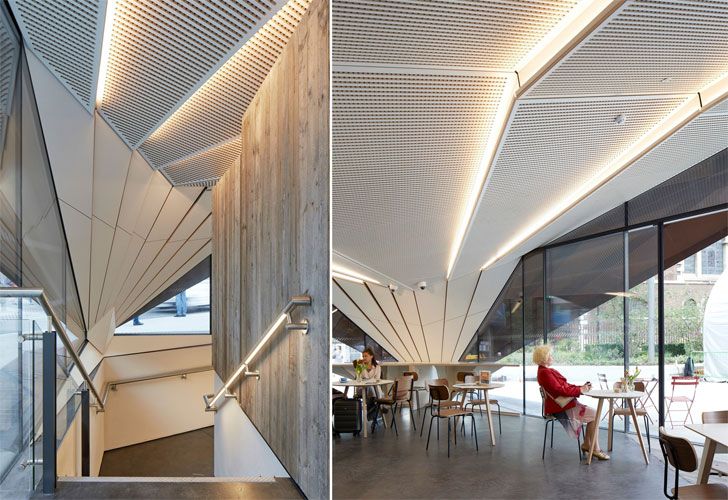 |
| . |
Internally, the bands of the cladding are mimicked on the soffit, with layered geometric white laminate timber panels, which have punched slots to aid the acoustics and add drama when up-lit at night, providing a glowing effect to the whole building. Outside, the roof overhangs the glazed doors on all sides to allow seating to spill out and provide a seamless transition between inside and outside.
The 325 sq. m building is a single storey above-ground but has utilised part of the former subways to accommodate a basement level for plant, back-of-house facilities, kitchens and toilets, this has significantly reduced the quantity of land that was needed above ground and therefore delivered more public space for the gardens.
The constant temperature of the concrete tunnels also works to help regulate the temperature of the building, air is drawn through the tunnels and up into the café, heating in the winter or cooling in the summer. The large overhangs on the roof are also attuned to the orientation of the sun and provide solar shading to the interior at peak times of the day. The underside of the steelwork that constitutes the internal space has been treated with 150 mm of insulation to minimise heat loss and remove the possibility of condensation forming on the internal face of the steelwork.

No comments :
Post a Comment